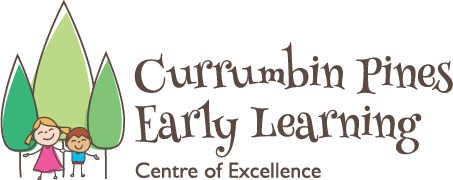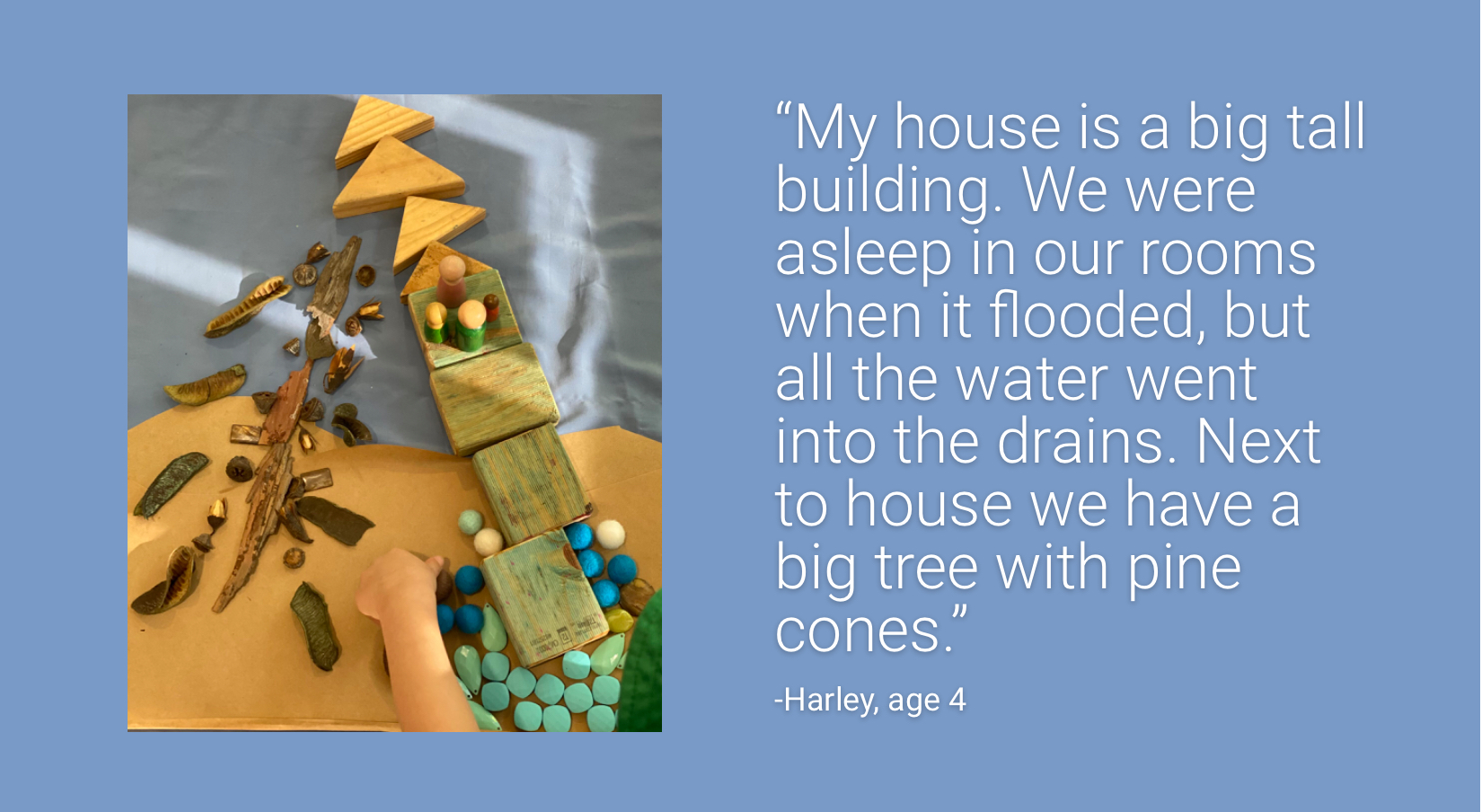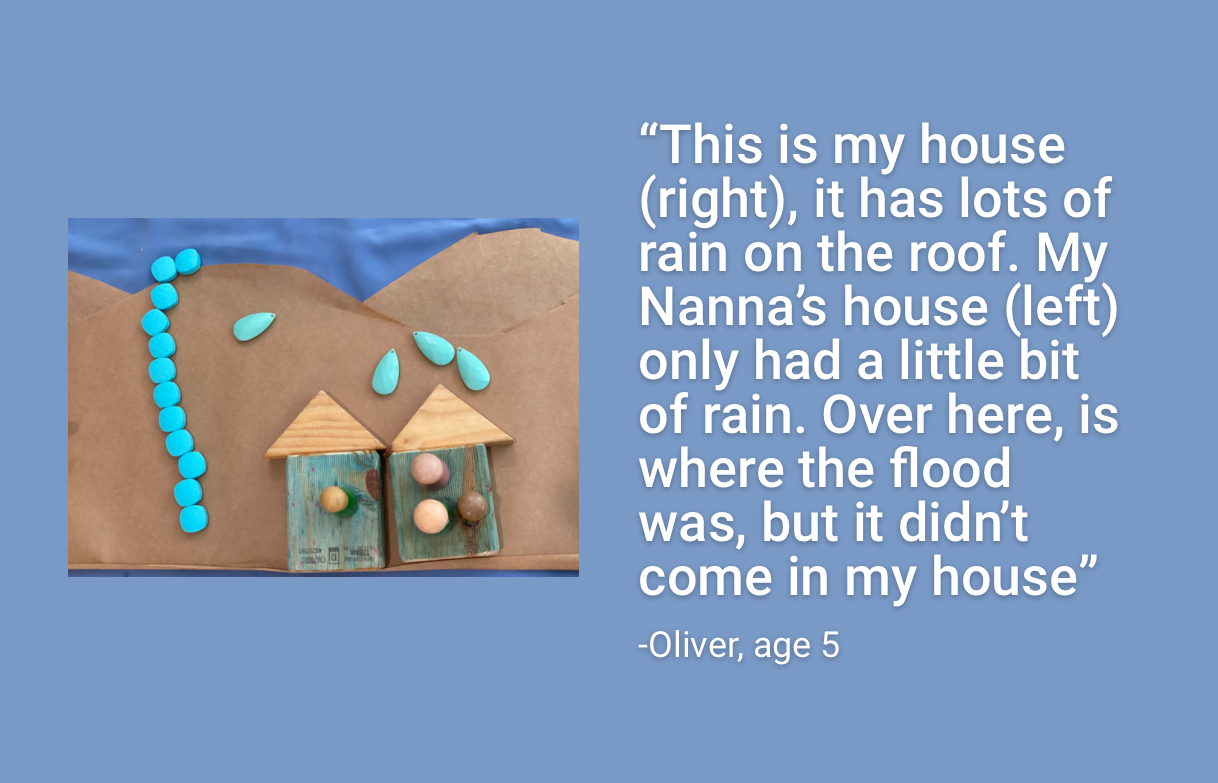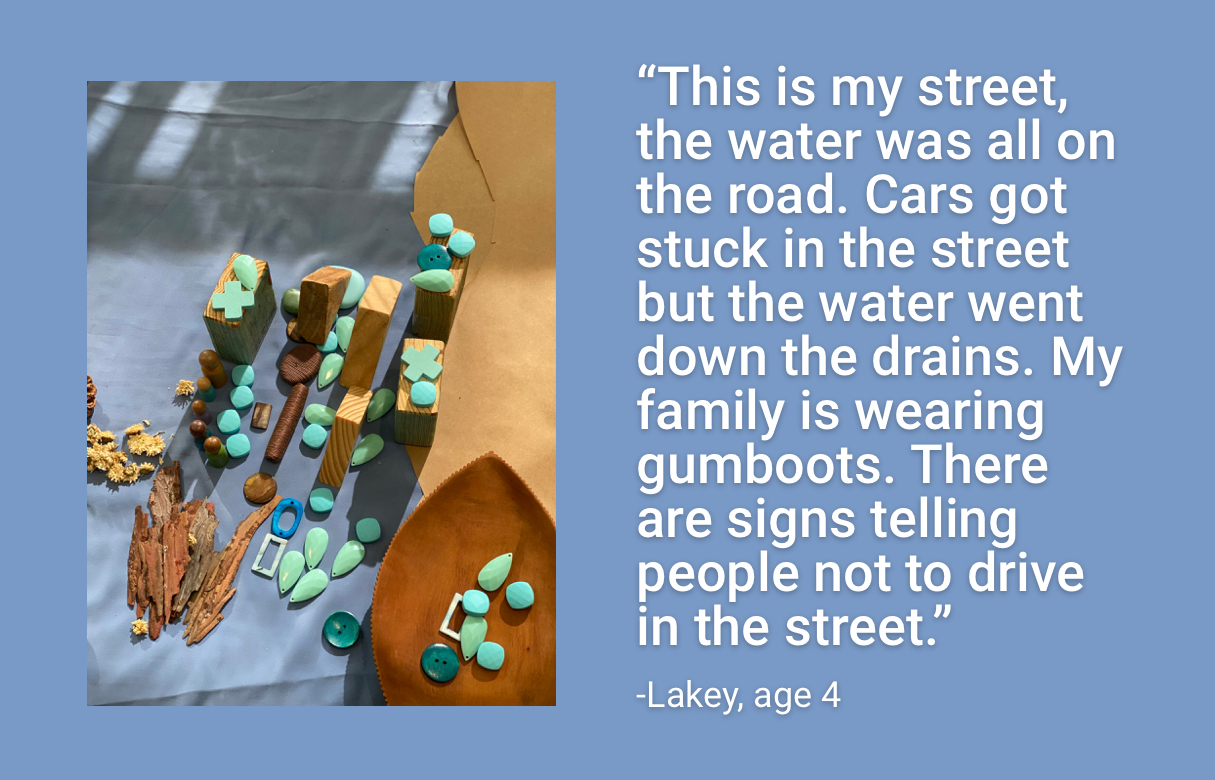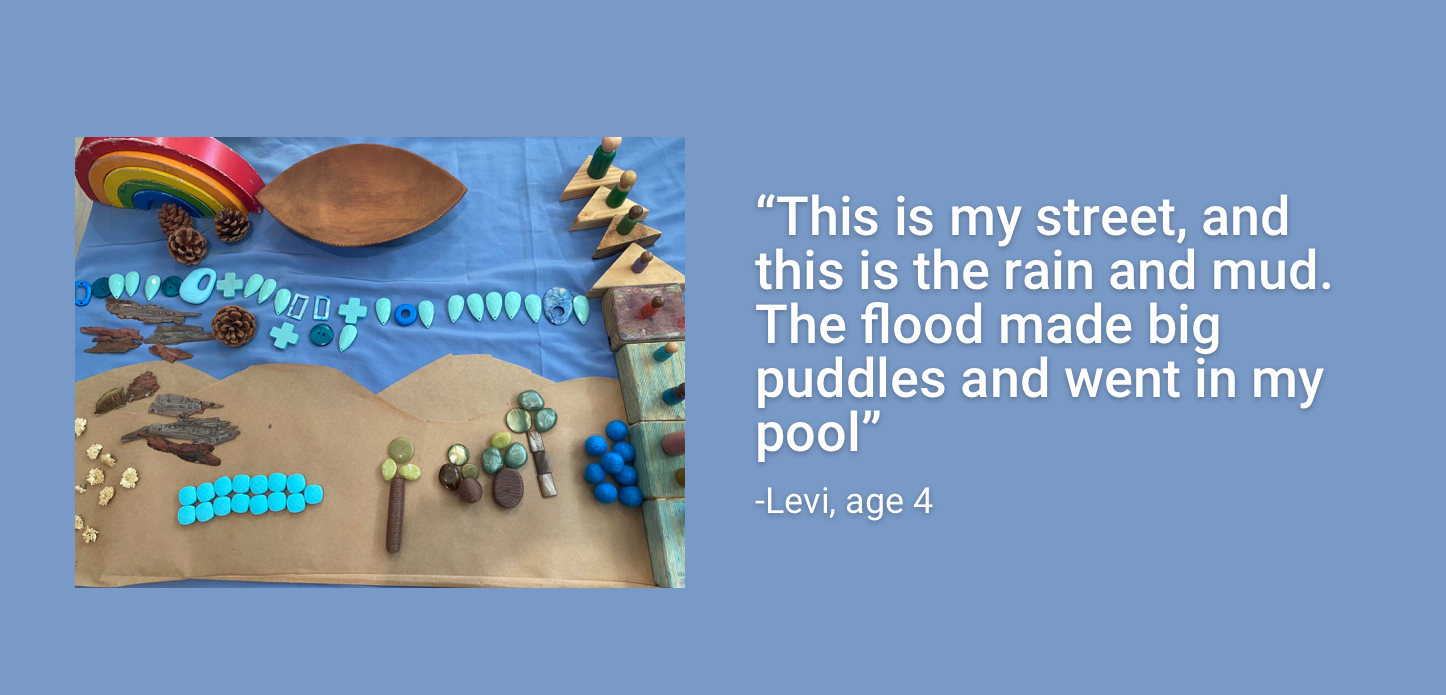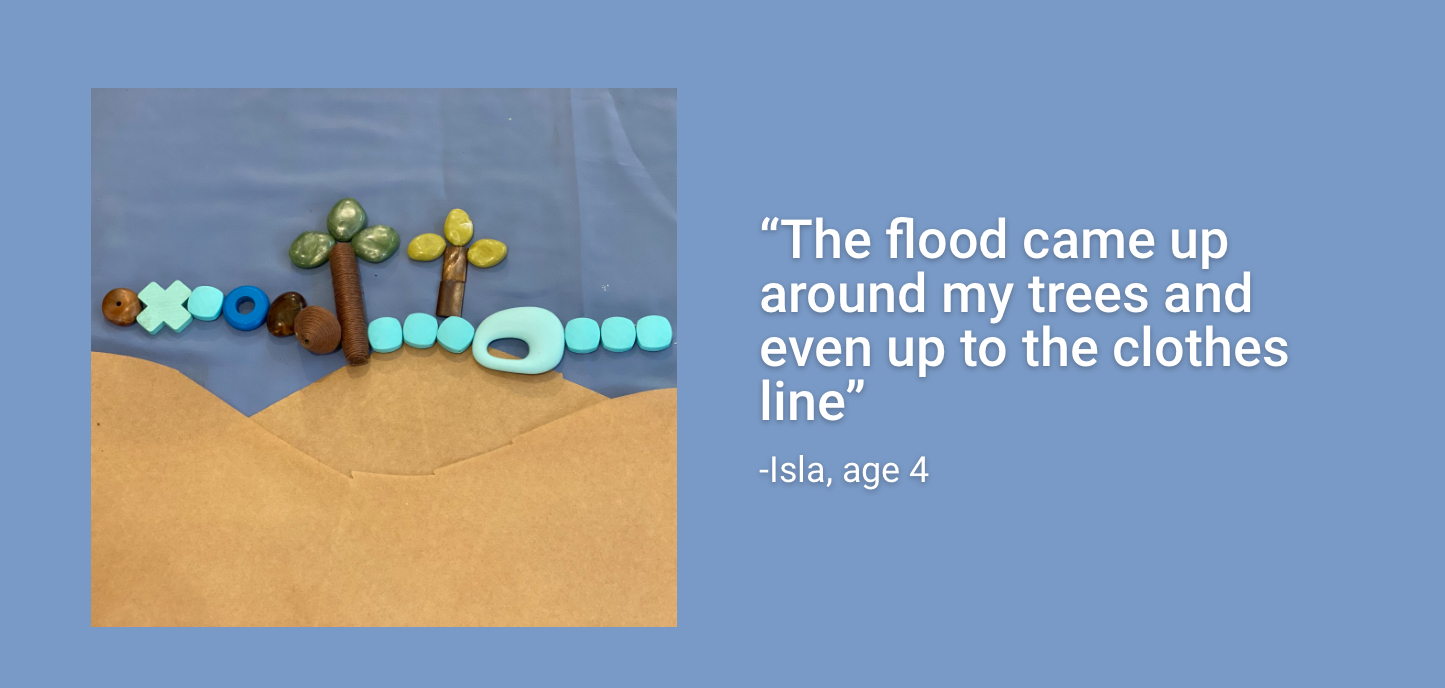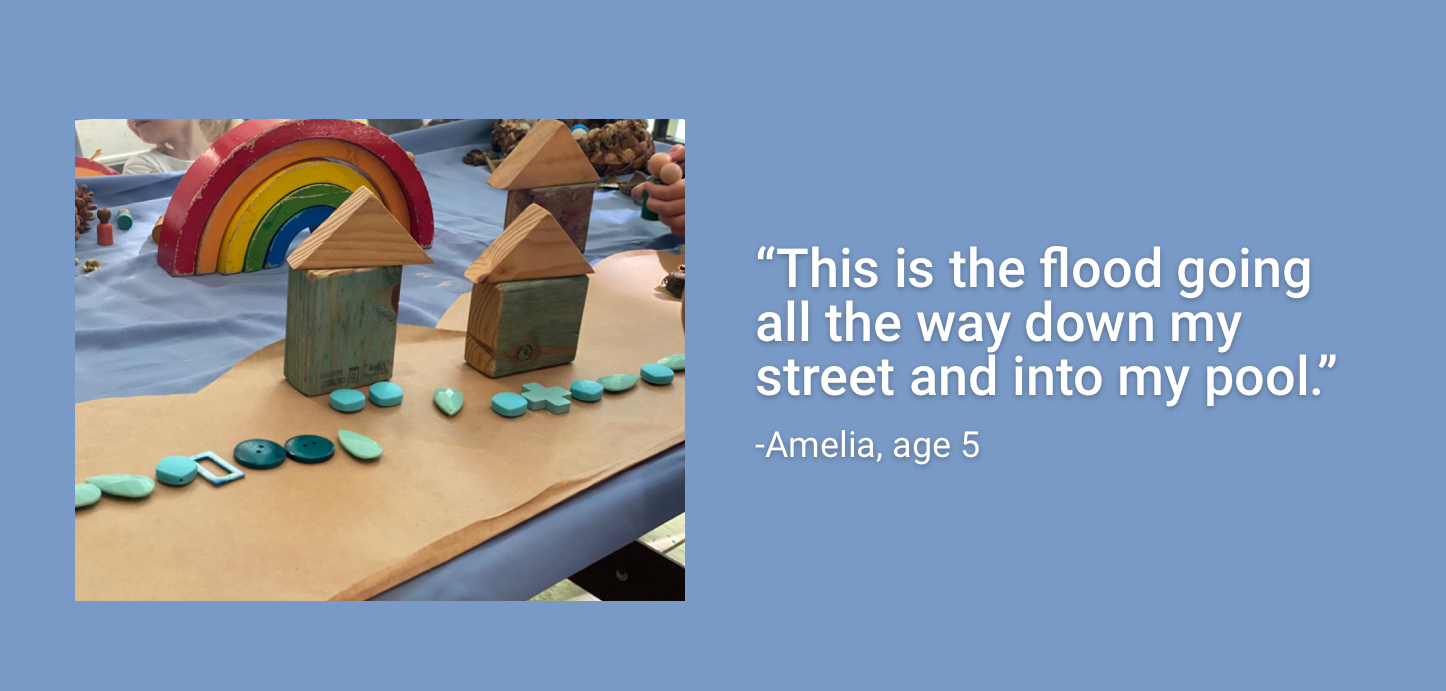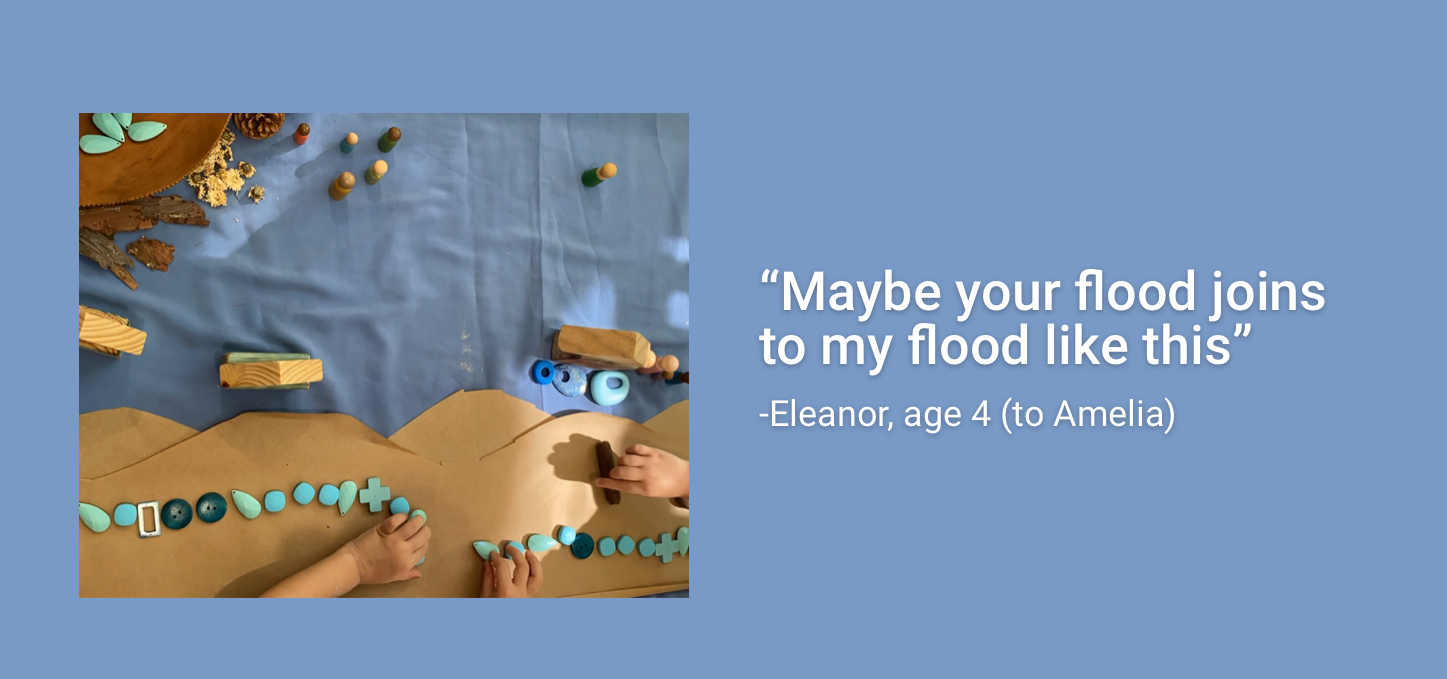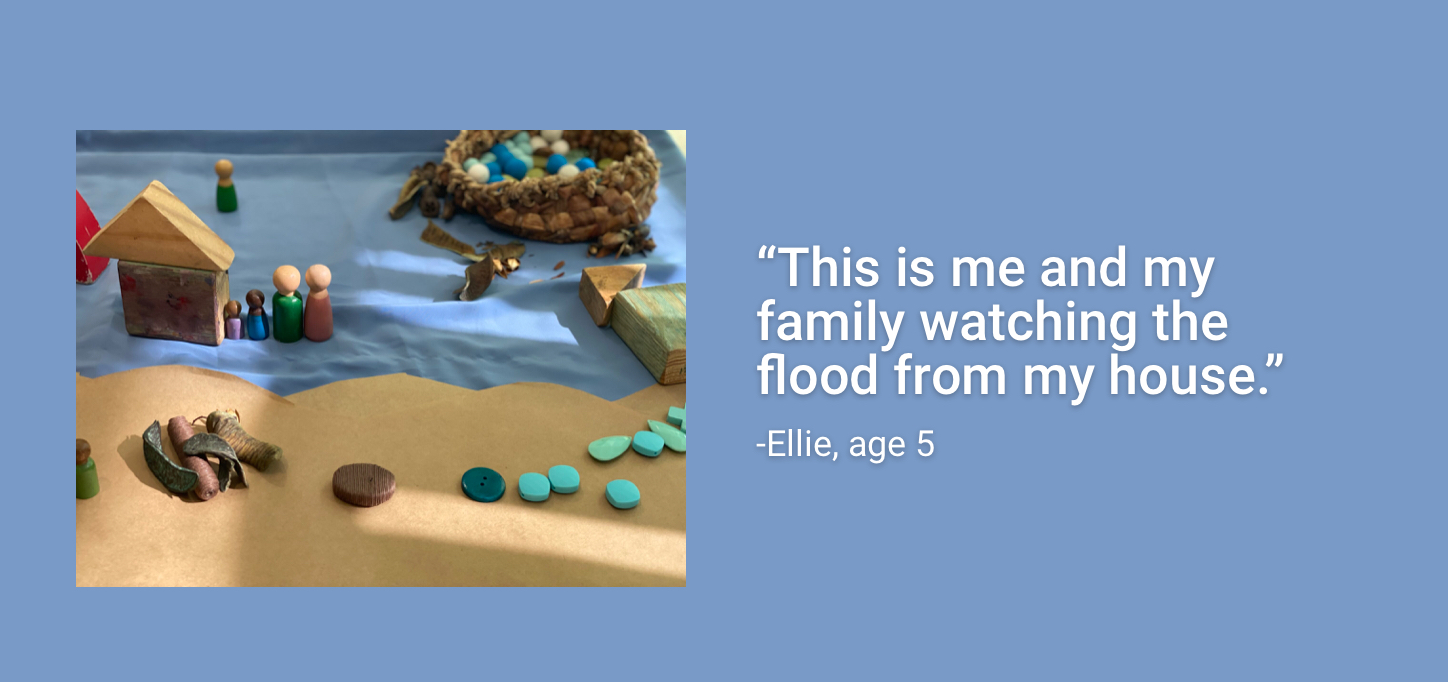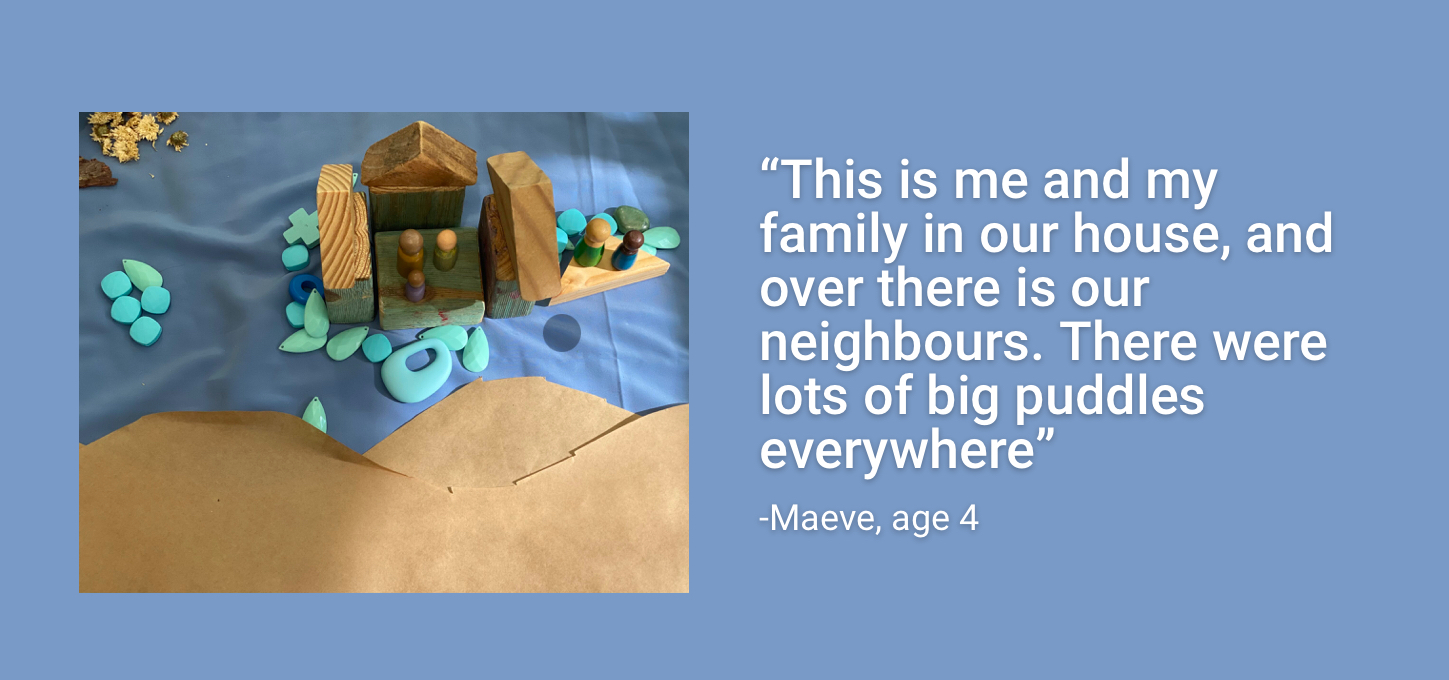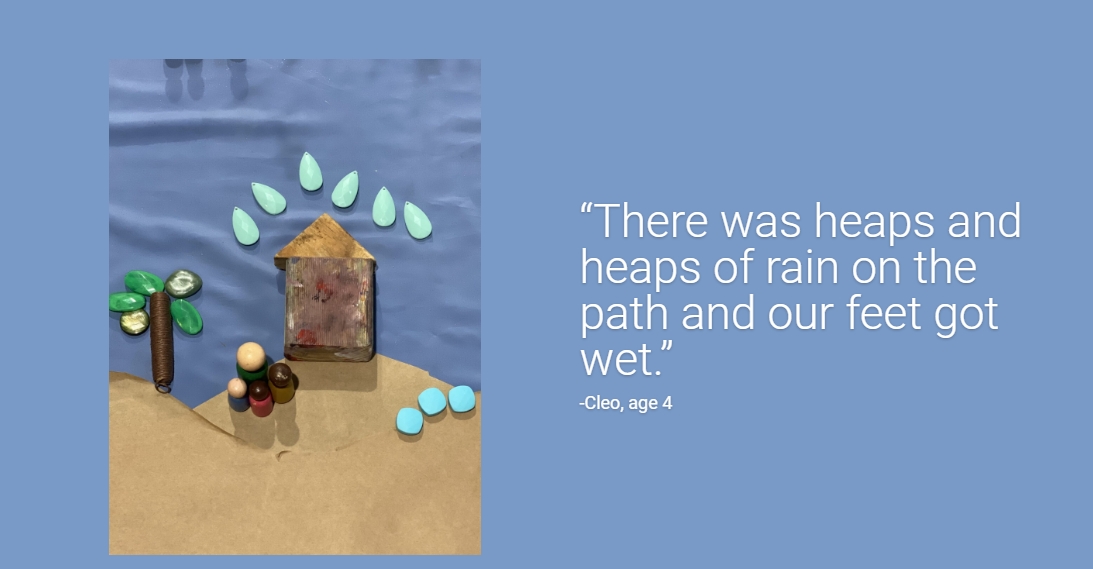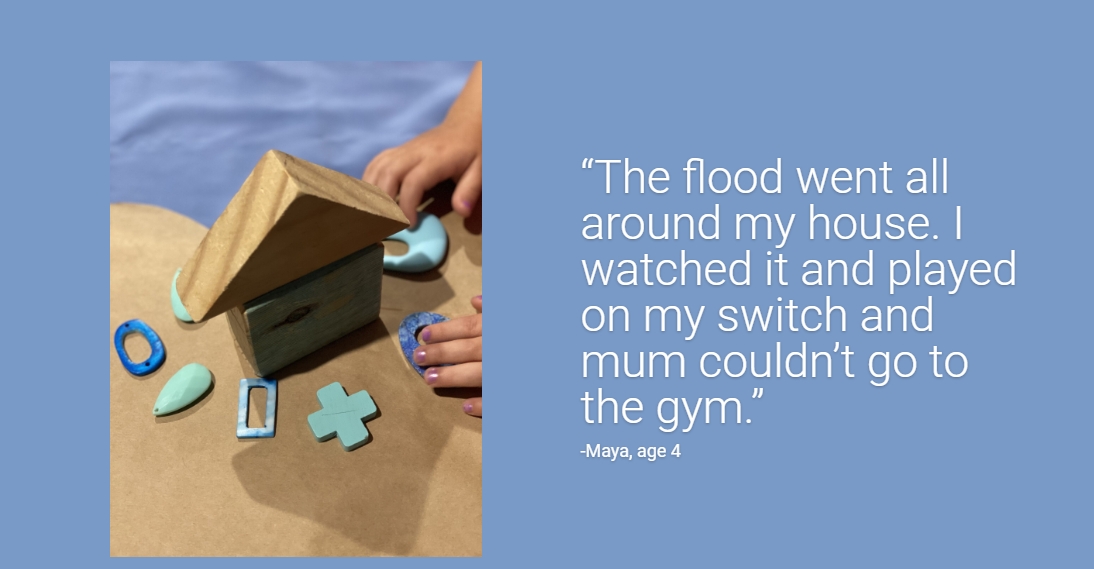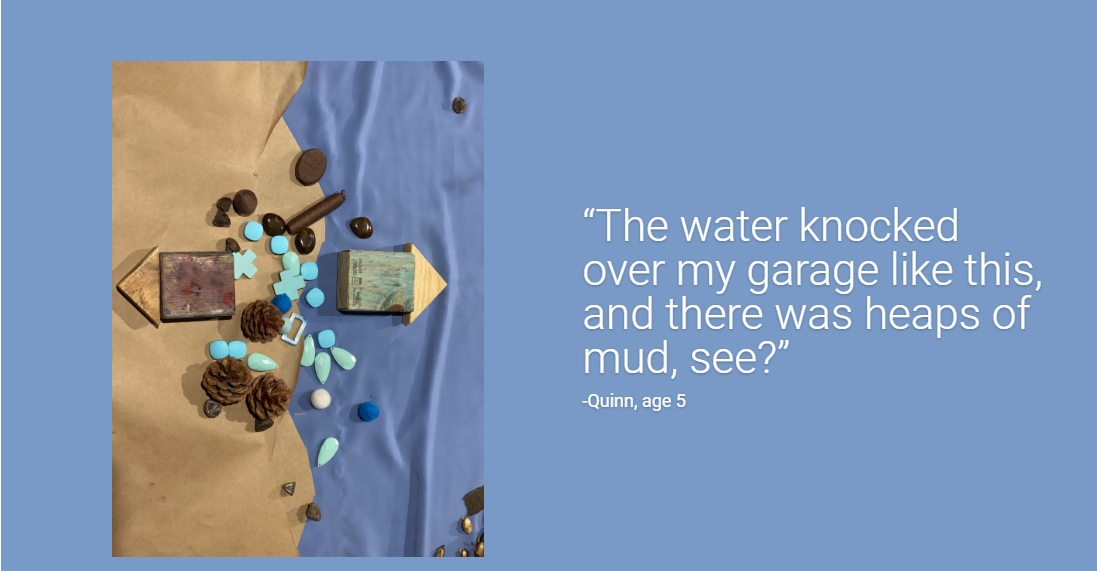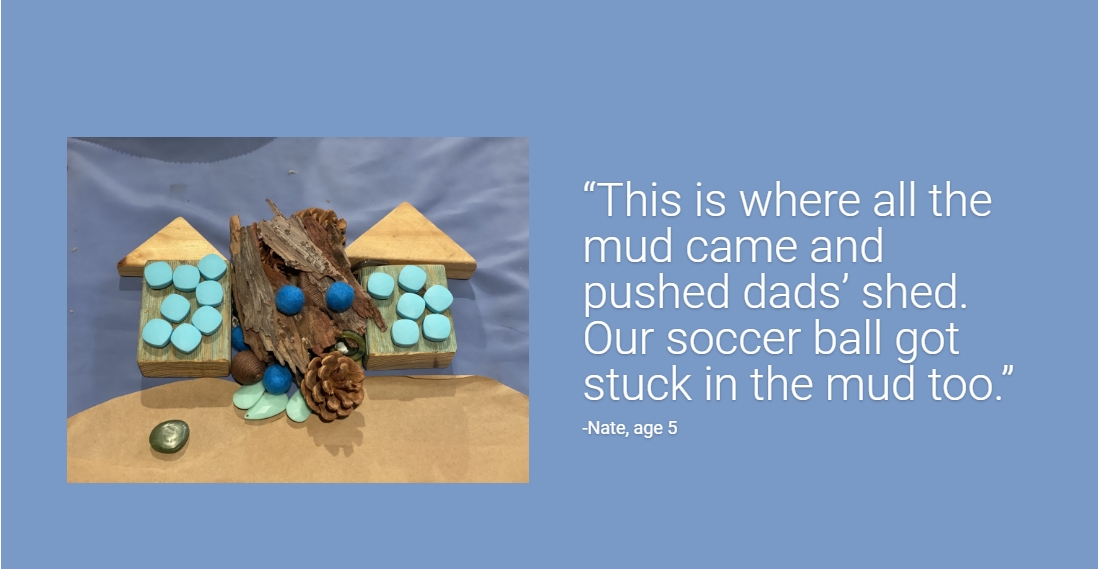The Flood:
Through the Eyes of the Child
An Atelier Case Study
Written By Sienna Craig
In February 2022 South-East Queensland experienced torrential rain and severe flooding, Kindy closed, families were stuck in their homes or streets, power went out, cars got swept away, and helicopters and boats were rescuing people. Through it all, our children were observing, listening and wondering.
So, when CPELC reopened, and roads were cleared, our educators ensured we would be a place of familiarity, filled with its usual excitement, following it’s usual routines and being a safe place to sort through any thoughts and feelings from the previous few days. In the atelier, we used our knowledge of the Hundred Languages of the Child, to investigate the children’s perspective of the flood in an open ended way. The Atelierista chose loose parts as a medium for storytelling, as they offer a wide range of outcomes and cater to an array of ability levels, meeting children where they are at creatively.
Laying a simple backdrop on the table with blocks, blue, brown and green beads, wooden people and nature items she invited children to tell their story of events with a simple prompt:
Can you show me the flood?
With this prompt and a few loose parts the first child began choosing and placing items down, creating a transient artwork and telling a story as they went. Here, it is the atelieristas role to listen and respond without inserting themselves, offering open ended questions to prompt thought. The children had experienced their version of events first hand and were the leaders of their story. The children compared their experiences to others, noting the similarities and differences, building a sense of community in what they had seen and the feelings they had felt.
Visual Storytelling
As you view each image, can you see their story? Even without words, children can communicate their experiences, showing us their throughts and feelings through creative expression. Loose parts like these are transient, they can be moved and manipulated over and over, so as the story evolves in the mind of the child, so does the image on the table. This type of storytelling can be an incredible tool for working out big feelings, and tricky concepts while allowing adults to better understand the child’s thought process.
As you watch this video, take note of the process used, the was parts are manipulated in different ways to convey a story.
“The flood is a pattern”
The children created a tapestry of individual and collective experiences. Their stories, represented through their creative arrangements, were a testament to their resilience and ability to find meaning even in challenging times. Reminding us of their ability to observe, understand and reflect on experiences that adults may deem them incapable of comprehending. It reminds us of the role we play in giving children opportunities to share their thoughts and feelings through a multitude of outlets. By utilising a child’s natural play urge, imagination and creativity we allow them agency to communicate beyond words, and process big feelings in a gentle and approachable way.
In the days that followed, the atelier continued to be a space of exploration and expression. The children revisited their stories, adding new elements and perspectives as they processed their experiences further.
